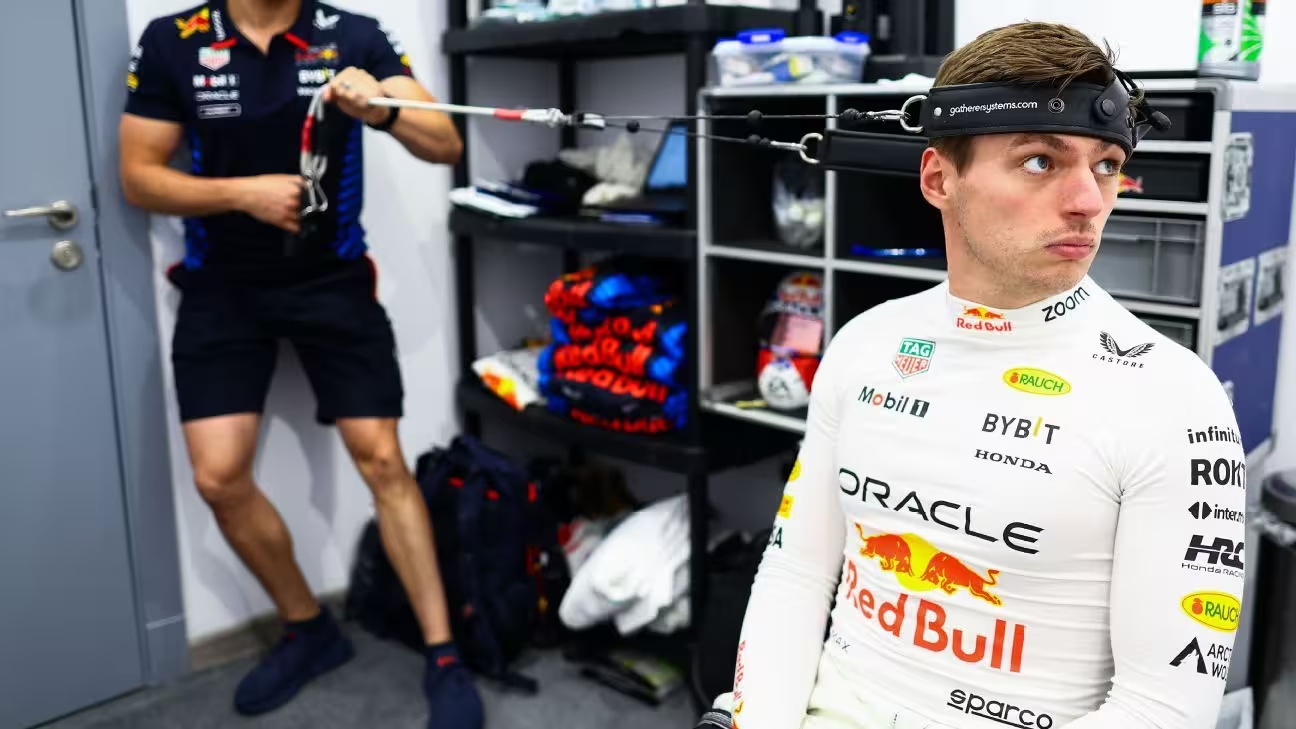Fitness and weight can be difficult for anyone to maintain. That’s further complicated when your job involves travelling around the world — across different time zones, cuisines and cultures — for 24 weeks of the year. That’s the baseline challenge facing every Formula 1 driver.
And then there are the races themselves, all of which are physically demanding, but some more so than others. Take Sunday’s Singapore Grand Prix, for example, where oppressive heat and humidity will push competitors to their physical limits.
Drivers’ bodies are managing an intricate balancing act: they must be strong enough to withstand gravitational forces of up to about 6 G’s, while still light enough so as not to be additional ballast in the car. And that balancing act must be performed for the entirety of an F1 season of nine-plus months.
During a typical grand prix, drivers can lose 2 to 3 kilograms (4.4-6.6 pounds) in sweat alone, depending on their weight and height, and as much as 4 kg (8.8 pounds) in Singapore for taller drivers. That’s approximately 3% to 4% of their bodyweight.
With such emphasis on drivers’ weights, one of the biggest difficulties is maintaining muscle mass throughout the course of the season. So how do they do it?
“You take small opportunities throughout the season to push a bit more,” Aleix Casanovas, George Russell‘s trainer, told ESPN. “So it goes back to having data from previous years. When there’s an easier race weekend, you push a bit more thinking about the future.”
For example, he says, from the start of the season at the Bahrain Grand Prix heading into the Saudi Arabian Grand Prix, the latter is much hotter and more physically taxing, so drivers can push the training harder in the buildup to the season opener. Monza is similar. There are “not that many corners, a lot of straights, so you can actually push a bit more that week. Thinking about the future and race week like Singapore, which you know is going to be heavy, you need to taper down exercise, so you will train a little bit less then.”
Each driver is different, but taller drivers such as Esteban Ocon and Alex Albon, both of whom are 1.86 meters (6-foot-1), tend to have more difficulty maintaining the sweet spot compared with shorter drivers such as Yuki Tsunoda, who is 1.67m (5-6). Next year, drivers’ minimum weight is…
Click Here to Read the Full Original Article at www.espn.com – RPM…

